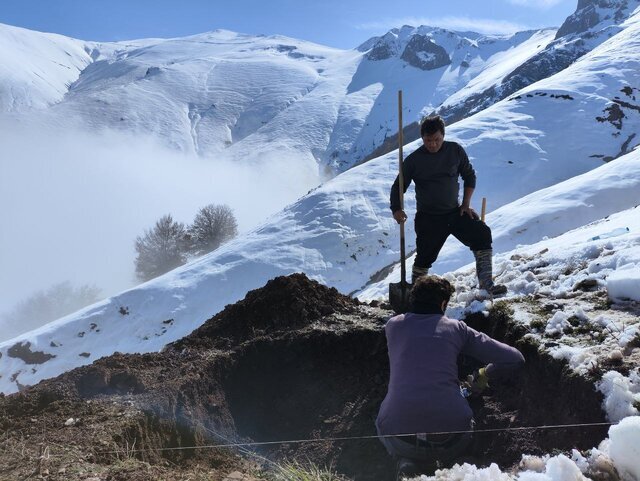Iranian and Chinese archaeologists collaborate on Masuleh highlands excavations
TEHRAN – A team of Iranian researchers and archaeologists, joined by Chinese fellows, has embarked on new excavations in the highlands of Masuleh to uncover the region’s rich metallurgical heritage. The findings aim to strengthen Masuleh’s case for World Heritage Site status under UNESCO, following the deferral of its nomination last year. The archaeological work,


TEHRAN – A team of Iranian researchers and archaeologists, joined by Chinese fellows, has embarked on new excavations in the highlands of Masuleh to uncover the region’s rich metallurgical heritage.
The findings aim to strengthen Masuleh’s case for World Heritage Site status under UNESCO, following the deferral of its nomination last year.
The archaeological work, led by Iranian experts Solmaz Raouf and Behzad Ali Talashi, is centered on two key sites: the “Kohneh Masuleh” and the ” Siyapasieh” areas, the latter located at an altitude of 2,500 meters.
Siyapasieh, which translates to “burnt black” due to the abundance of ash darkening its soil, is believed to have been a significant center for iron smelting and metallurgy in ancient times.
For the first time since its initial discovery in 2017, the site has yielded evidence of ancient metalworking furnaces. However, the excavation is challenging due to its steep 35-degree slopes, extreme weather, and avalanche-prone terrain. These conditions have slowed progress, leaving the full extent of the furnaces still buried beneath the soil.
The ongoing research is further enriched by the involvement of a Chinese archaeometric team specializing in metallurgy. They are conducting detailed analyses of furnace samples to identify the sources of Masuleh’s iron ore, assess the technological sophistication of its metallurgical practices, and explore its trade links with neighboring and distant regions.
Preliminary results from systematic surveys suggest that Masuleh was a hub for alloy production and iron smelting, with evidence pointing to interactions with cities like Ardabil, Zanjan, and Tabriz. Yet critical questions remain unanswered: When did the iron smelting industry in Masuleh begin, and how long did it thrive? What volume of tools and weaponry was produced, and which governing powers were its primary beneficiaries?
The historical significance of Masuleh’s metallurgy is underscored by its later role during the Qajar era when it supplied cannonballs to the royal armory under Fath-Ali Shah’s administration. Despite this, the broader reach of its metallurgical industry remains unclear.
Masuleh, a terraced village located 25 kilometers southwest of Fuman in Gilan province, was listed as a national heritage site in 1975 and temporarily registered on UNESCO’s World Heritage List in 2007. Following the deferral of its case by ICOMOS in 2023, Iran has been given the opportunity to address ambiguities and resubmit the nomination.
The ongoing excavation is expected to provide crucial insights into the ancient metallurgical traditions of Masuleh, paving the way for its potential recognition as a World Heritage site. This research not only contributes to the understanding of Masuleh’s cultural and historical legacy but also highlights its enduring significance in the broader context of Iran’s metallurgical history.
AM
